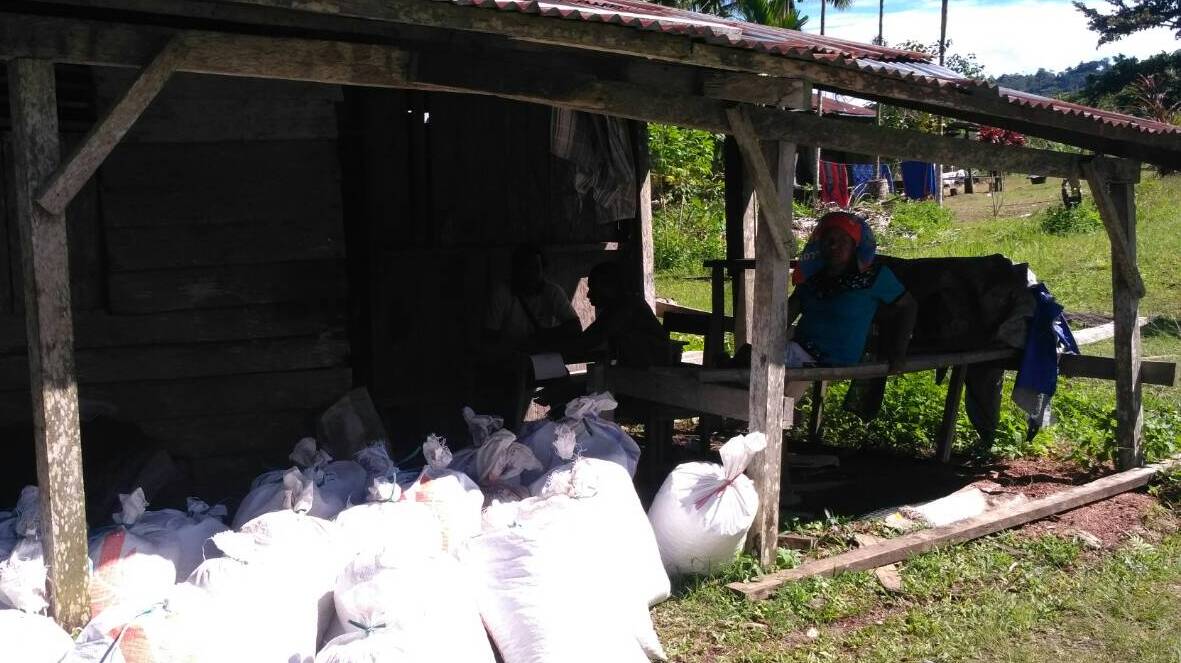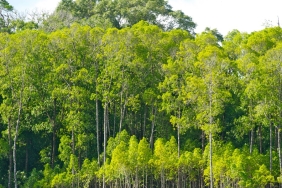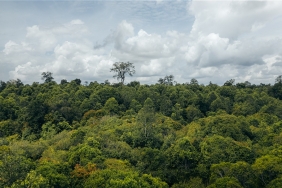ORGANIC COCOA BY COCOA FARMERS IN GRIME VALLEY
Cocoa (Theobrama cacao L) is a type of fruit that is very eye-catching because of its oval shape with different colors such as yellow and reddish green, and its taste is identical to the bitter sweet and sour taste, suitable to be paired with milk, cheese, creamer or fruit for desserts or just snacks that are loved by children and adults.
The variety of derivative products made from cocoa raw materials varies from food to beverages. To become a dish on the table, cocoa goes through a long process. Let's take a peek at what the stages are!
Cocoa is known to be grown organically or non-organically, this time it is specifically organic cocoa. The group of cocoa farmers assisted by the WWF Indonesia Foundation, in the Grime Valley area, Jayapura Regency Papua are organic cocoa farmers who live in 3 villages namely Soaib, Aimbe, and Kalisu. The farmers are assisted to be able to manage cocoa by applying 10 organic principles, namely:
- Land clearing is not permitted using chemicals and slash-and-burn;
- Cocoa seedlings only use local cocoa seedlings from group farms;
- Soil and plant fertility management is not permitted using chemical fertilizers;
- Pest and disease prevention is not permitted using chemical pesticides;
- Crop pruning is recommended, to control pests and diseases and maintain productivity;
- Fruit picking is done with a sharp object by leaving the fruit stalk on the tree to maintain the productivity of the plant;
- Elimination of grass in the garden is only permitted by manual method without burning;
- Fruit splitting during harvest is only permitted using blunt objects on a clean mat, not directly on the ground;
- Wet seed harvest is packed in clean sacks to prevent contamination;
- Wet seed crops are not mixed with other non-organic crops to prevent mixing.
The cocoa varieties developed by farmers are Criollo, Forester, and Trinitarian. The Criollo variety was first developed by the Dutch in the 1950s in Jayapura Regency. Current cocoa farmers have owned cocoa farms for generations and many trees are quite old, so rejuvenation is necessary through the method of shoot grafting and side grafting. Farmers began to replant their forests with agroforestry systems.
In addition to the uniqueness of the varieties, farmers also try to maintain the quality through the stages of harvest, post-harvest, fermentation and selection of seeds that meet the standards. The harvesting process for each variety can be different. For the Criollo type, the unripe shell is green or red, while the ready-to-harvest ones are orange. In the Forestero variety, the shell is green when raw and yellow and red when harvested. The Trinitario variety, on the other hand, is red or green when unripe and yellow at harvest.
Harvested fruits come from trees that are clean and free of pests and whose stalks have begun to dry. Fruit picking is done with a sharp object by leaving the fruit stalk on the tree to maintain crop productivity. Harvesting should not be delayed to maintain quality and encourage flower and fruit formation as well as avoid rotten fruit that invites pests and diseases.
After harvesting, the fruits are sorted. A good fruit when shaken will make a sound, has sufficient weight, this is a sign that it contains solid cocoa beans. Fruit splitting should only be done with a blunt object on a clean mat (not directly on the ground). After the beans are removed, the harvested wet beans are individually packed in clean sacks to prevent contamination.
Next is the fermentation stage. Fermentation is carried out using three boxes measuring 45 cm high, 55 cm wide, 65 cm long. The three boxes are arranged from high to low to facilitate the mixing of seeds. The containers should not touch the bottom of the soil to allow the pulp to flow. Place the container under a hut or roof to avoid rainwater. Fermentation usually takes 5-6 days. Make a test cut on the fifth day to check if the seeds have fermented properly. After fermentation, the next step is drying. This is the last stage to get ready cocoa beans with good organic quality.
Farmers should pay attention to the drying place, i.e. the roof of the drying house is made of non-transparent plastic so that the beans are not overheated, do not let the beans continue to be exposed to the sun for the first three days. The dried cocoa beans should be stirred using a wooden rake every 2 hours for 2-3 days. On the fourth day, the beans will be stirred about 2-4 times a day to ensure even drying. To prevent the beans from overheating during the day, the sides of the house should be opened during the day and closed at night to avoid rain.
Cocoa clumps or fused beans should also be noted, while flattened or infected beans should be discarded. The plastic should be cleaned periodically with a soft cloth and no detergents or anything harsh that will scratch the plastic should be used.
In group mentoring, the involvement of women is important. Especially in the process of harvesting, sorting, fermentation, and drying, women are often involved. These activities for women are still a sideline, as they are more focused on plantation activities and taking care of the household.





